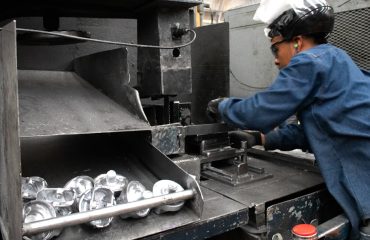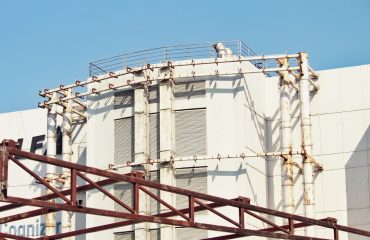Industrial pipes are the unsung heroes of manufacturing. They form the circulatory system of any factory, transporting crucial fluids, gases, and slurries that keep production lines running smoothly. Choosing the right pipes is paramount, impacting efficiency, safety, and the overall lifespan of your equipment. This comprehensive guide delves into the crucial aspects of selecting industrial pipes for your manufacturing facility.
1. Material Selection: The Foundation of Durability and Performance
The material of your industrial pipes is the cornerstone of their performance. The choice depends heavily on the substance being transported, the operating temperature and pressure, and the corrosive environment. Common materials include:
- Carbon Steel: A cost-effective option suitable for many applications, offering good strength and durability. However, it’s susceptible to corrosion, necessitating protective coatings in certain environments.
- Stainless Steel: Highly resistant to corrosion and oxidation, making it ideal for handling aggressive chemicals and high-purity fluids. Different grades (like 304 and 316) offer varying levels of corrosion resistance.
- Ductile Iron: Possesses high tensile strength and excellent resistance to corrosion, making it suitable for underground applications and high-pressure systems.
- PVC (Polyvinyl Chloride): A lightweight and corrosion-resistant option, perfect for handling chemicals and water, but limited in its temperature and pressure tolerance.
- CPVC (Chlorinated Polyvinyl Chloride): Offers superior temperature resistance compared to PVC, expanding its application range.
- Other specialized materials: Depending on specific needs, materials like fiberglass-reinforced plastic (FRP), copper, and various alloys are employed for their unique properties.
Careful consideration of the transported medium and operating conditions is crucial for selecting the appropriate material to avoid costly failures and downtime.
2. Pipe Sizing and Flow Rate Optimization: Ensuring Efficient Transfer
Proper pipe sizing is essential for maintaining efficient fluid flow. Undersized pipes lead to increased pressure drop and reduced flow rates, potentially impacting production. Oversized pipes, while seemingly allowing for greater capacity, can increase material costs and create unnecessary complexity in the system. Accurate sizing requires considering:
- Fluid viscosity: Thicker fluids require larger pipes to maintain adequate flow.
- Flow rate: The desired volume of fluid to be transported per unit time dictates the pipe diameter.
- Pressure drop: Calculations must account for frictional losses along the pipe’s length.
- Pipe roughness: Internal pipe roughness affects friction and pressure drop.
Utilizing specialized software or consulting with experienced engineers ensures optimal pipe sizing for your specific application, maximizing efficiency and minimizing energy consumption.
3. Pressure Ratings and Safety Considerations: Protecting Personnel and Equipment
Industrial pipes operate under varying pressure conditions. Selecting pipes with adequate pressure ratings is critical for safety and preventing catastrophic failures. Pressure ratings are typically expressed in pounds per square inch (PSI) or bars. Factors influencing pressure rating selection include:
- Operating pressure: The maximum pressure expected during normal operation.
- Safety factor: An additional margin added to account for unforeseen pressure surges or fluctuations.
- Temperature: Higher temperatures can reduce the pipe’s pressure capacity.
- Pipe material: Different materials have different pressure tolerances.
Always choose pipes with a pressure rating significantly exceeding the expected operating pressure, ensuring a substantial safety margin. Regular inspections and pressure testing are also essential for maintaining safety and identifying potential issues.
4. Pipe Fittings and Connections: Ensuring Seamless Integration and Leak Prevention
Pipe fittings are essential components that connect pipes, change direction, control flow, and facilitate maintenance. Choosing the right fittings is crucial for ensuring a leak-free and robust piping system. Common fittings include:
- Elbows: Change the direction of the pipe.
- Tees: Create branching points in the piping system.
- Unions: Allow for easy pipe disassembly and maintenance.
- Valves: Control the flow of fluids.
- Flanges: Provide a robust connection between pipes.
The selection of fittings should align with the pipe material and pressure rating to ensure compatibility and prevent leaks. Proper installation techniques are equally crucial for maintaining system integrity.
5. Cost Optimization and Lifecycle Management: Balancing Initial Investment with Long-Term Savings
While initial cost is a consideration, focusing solely on the cheapest option can be shortsighted. A poorly chosen piping system can lead to frequent repairs, replacements, and production downtime, escalating costs significantly over the long run. A lifecycle cost analysis should consider:
- Initial purchase price: The upfront cost of the pipes and fittings.
- Installation costs: Labor and material costs associated with installation.
- Maintenance costs: Costs associated with regular inspections, repairs, and replacements.
- Downtime costs: Production losses due to system failures.
- Energy costs: Energy consumption associated with pumping fluids through the system.
By considering all these factors, businesses can make informed decisions that optimize both initial investment and long-term operational efficiency.
Choosing the right industrial pipes is a crucial decision with significant implications for manufacturing operations. By carefully considering the factors outlined above, manufacturers can ensure a safe, efficient, and cost-effective piping system that supports their production goals for years to come.
SEO Tags:
- Industrial Pipes
- Manufacturing Piping Systems
- Pipe Material Selection
- Industrial Pipe Sizing
- Pressure Rated Pipes




